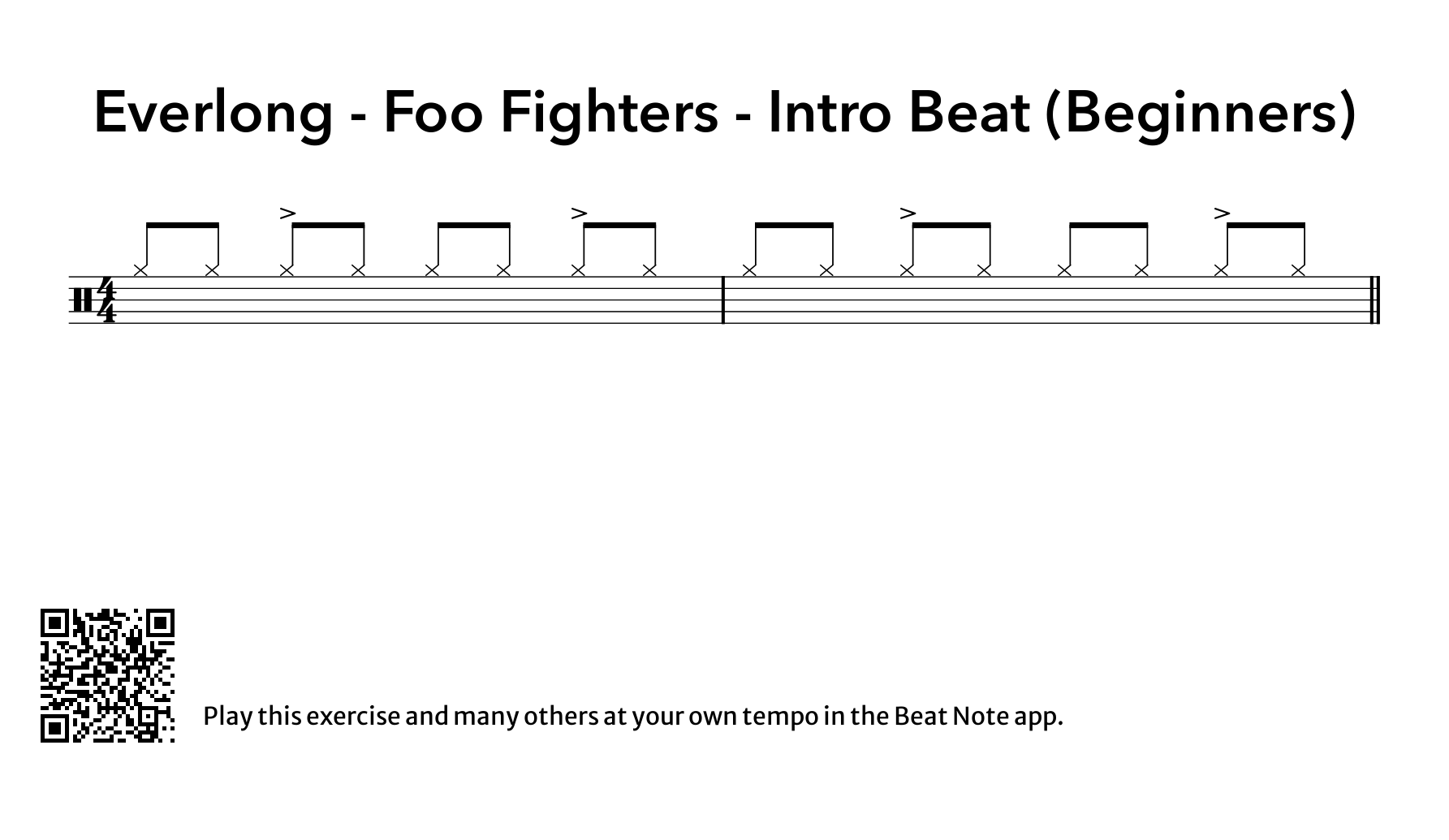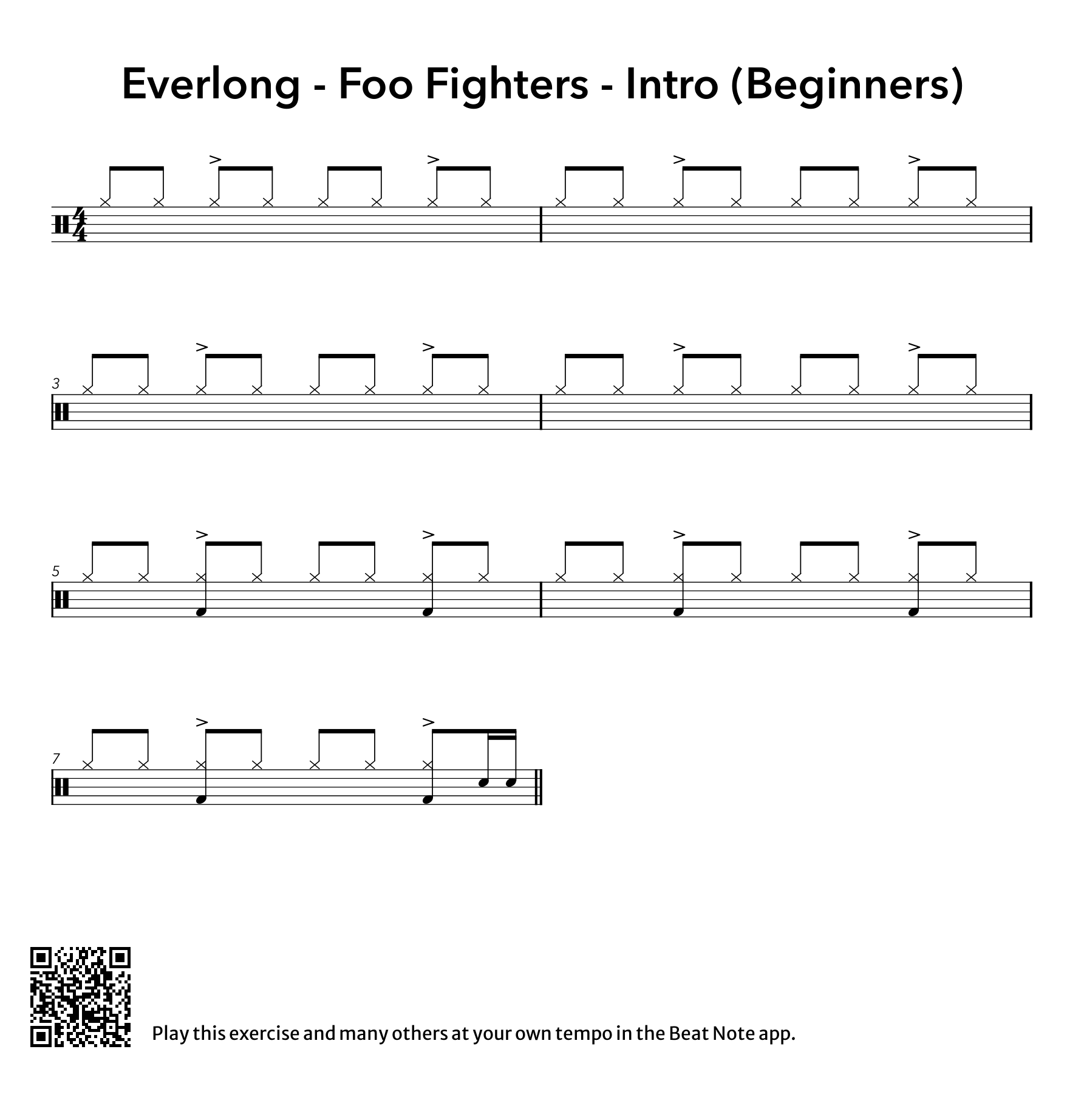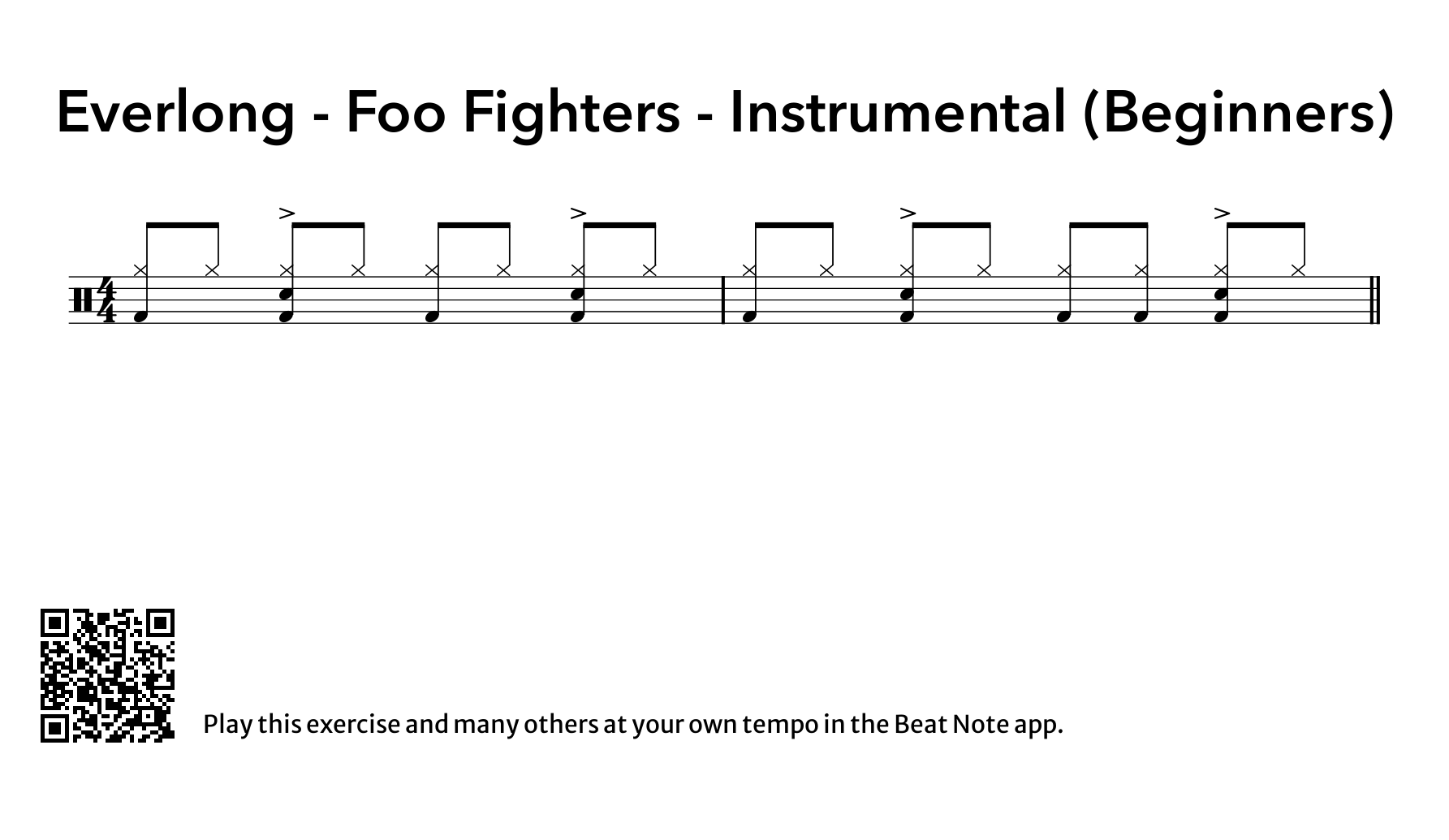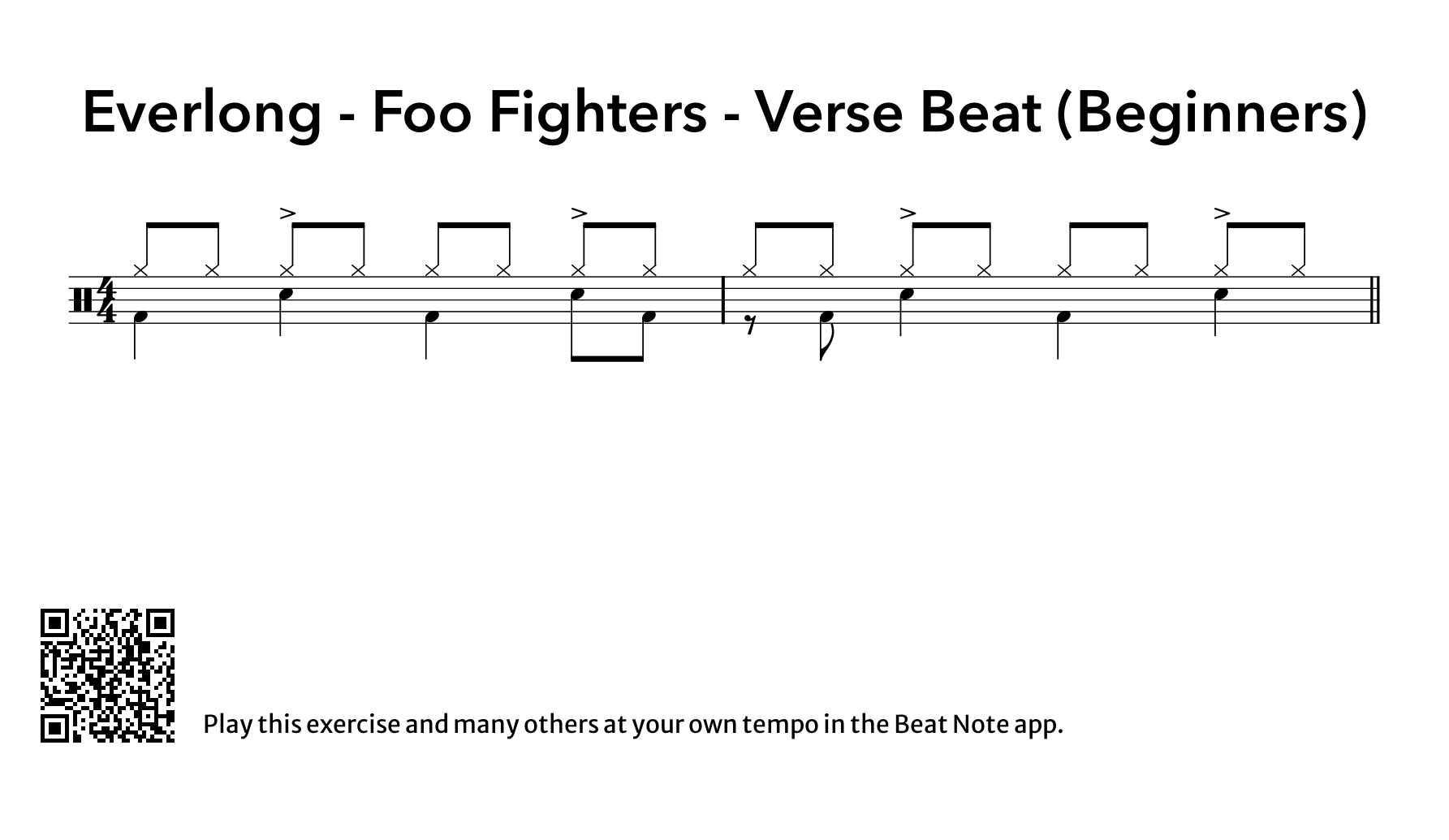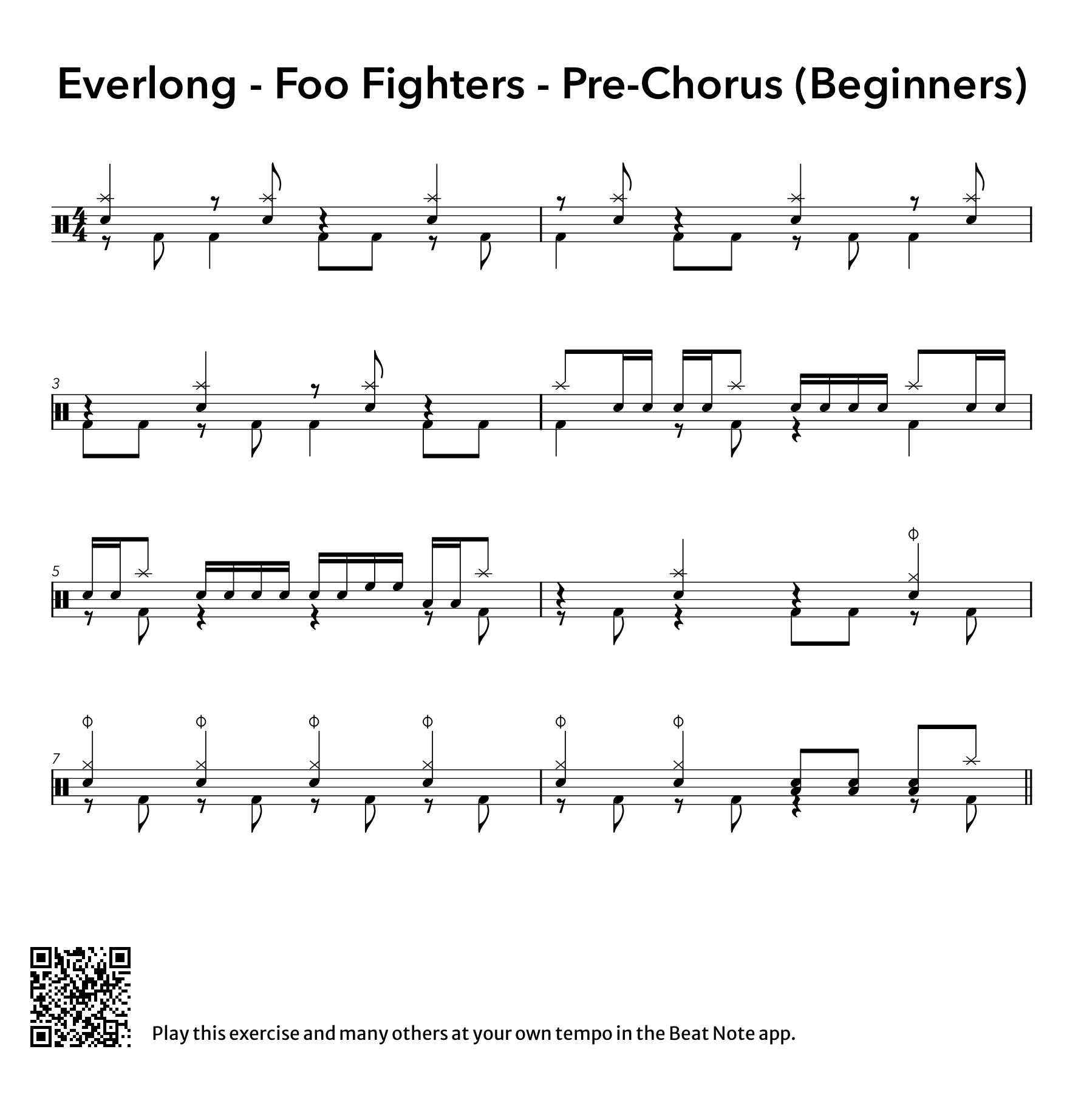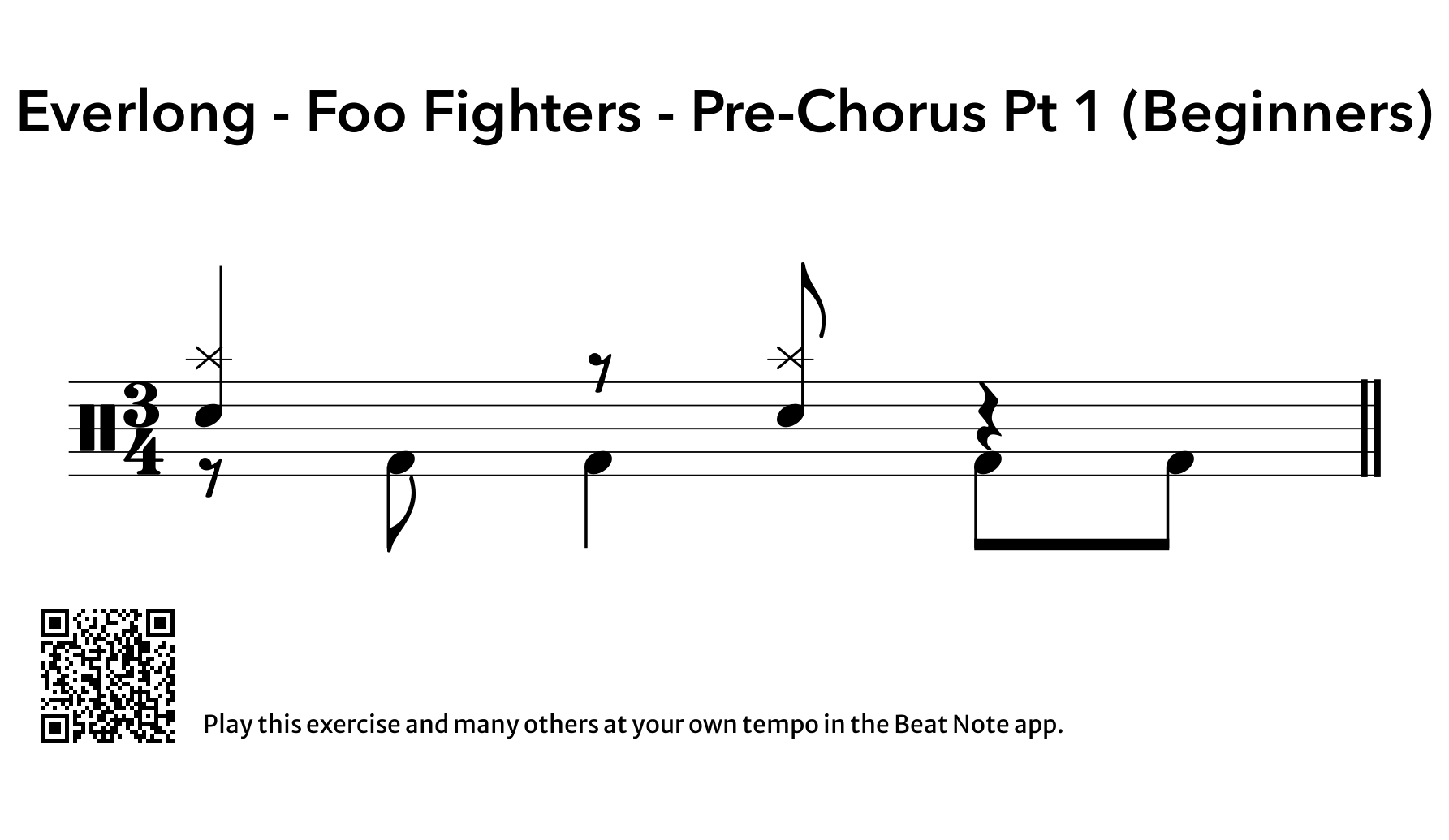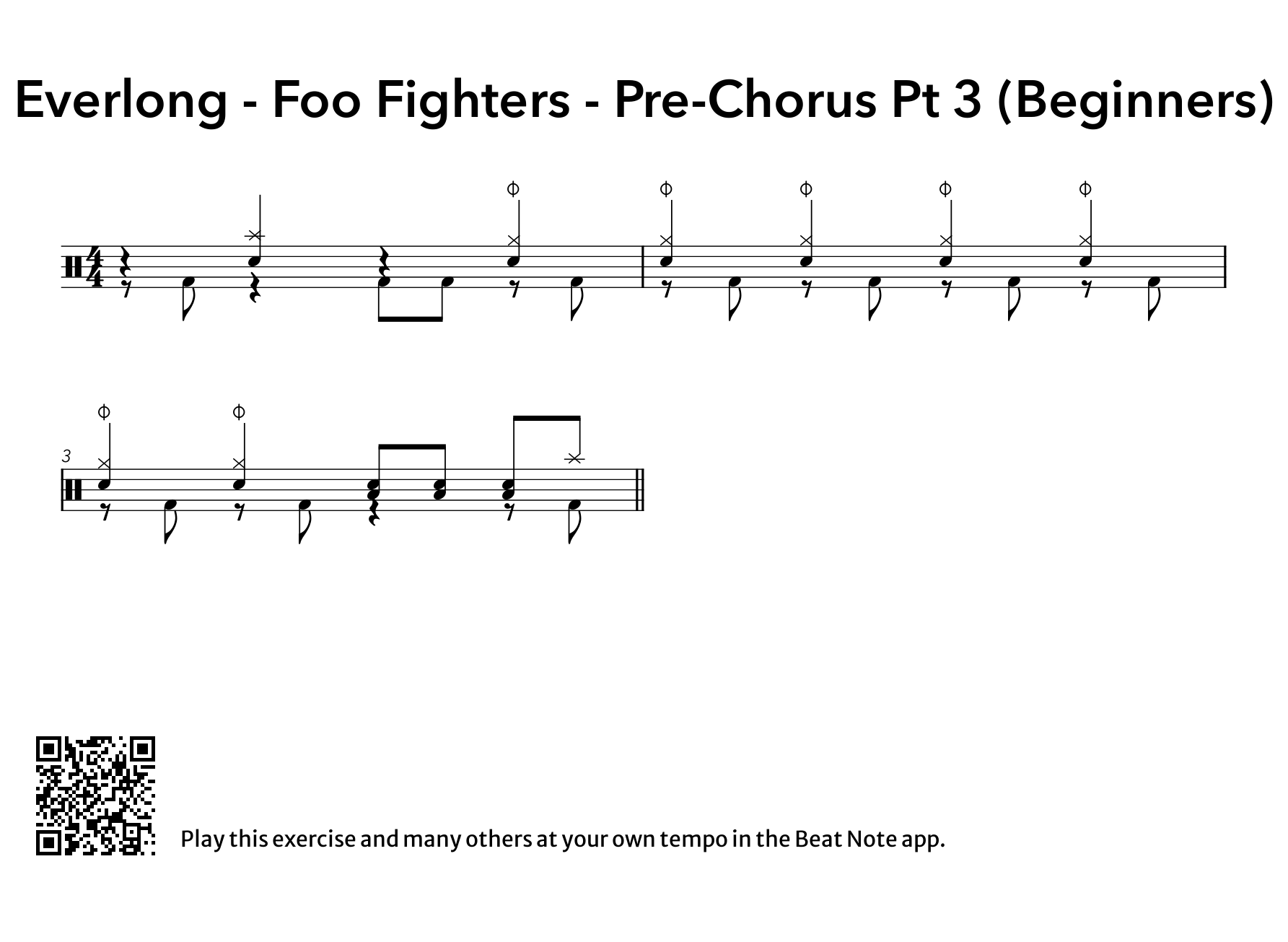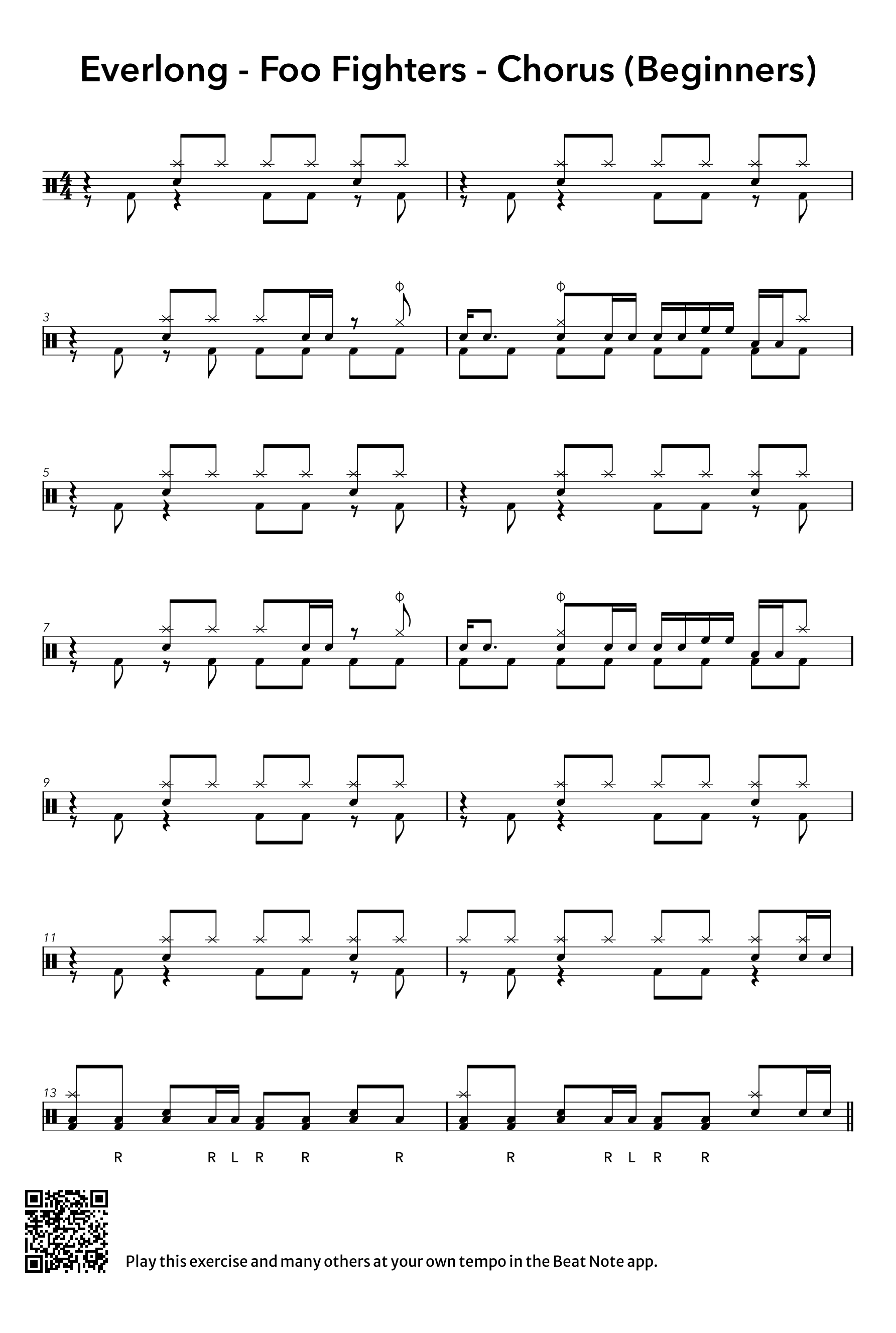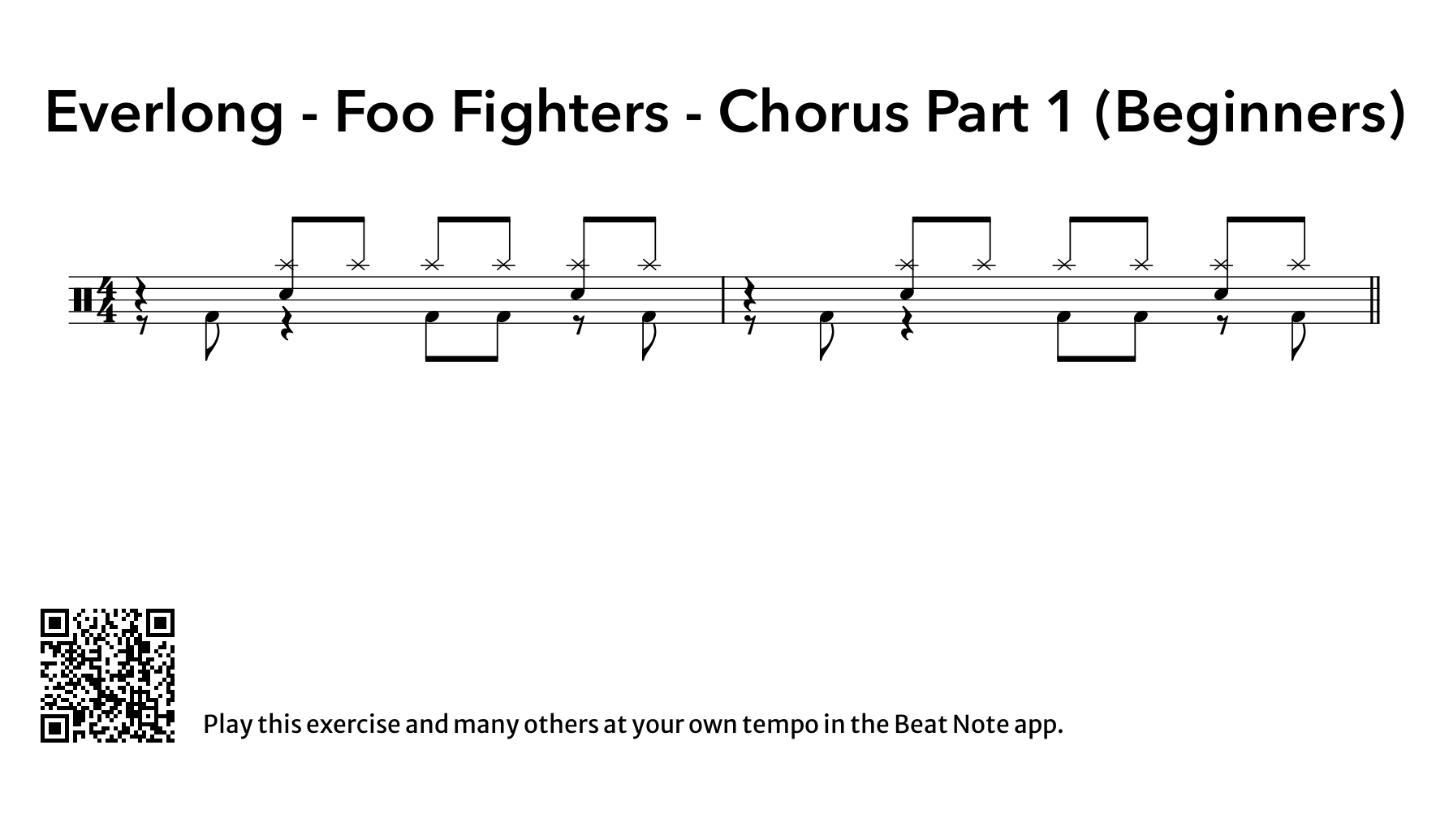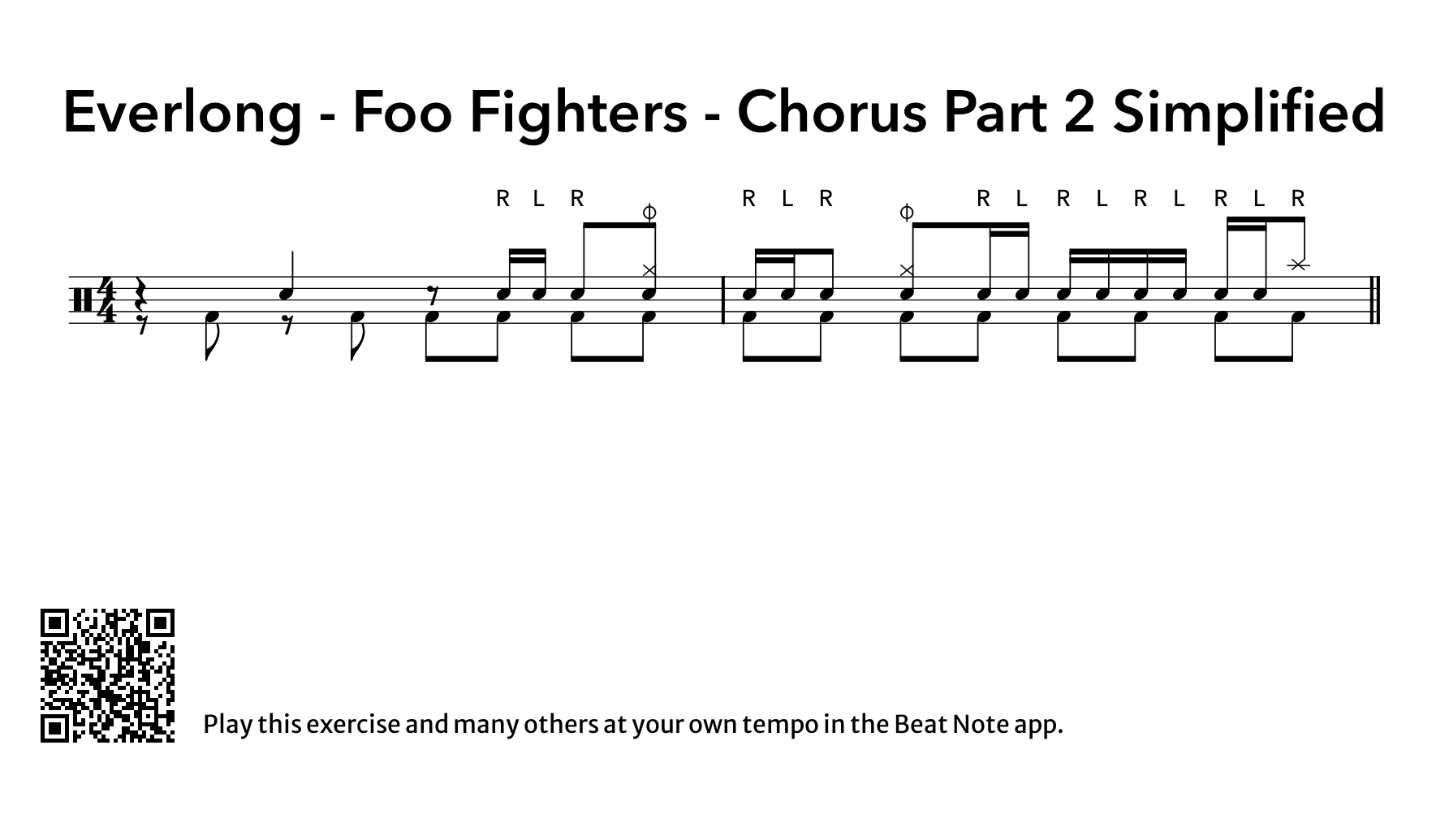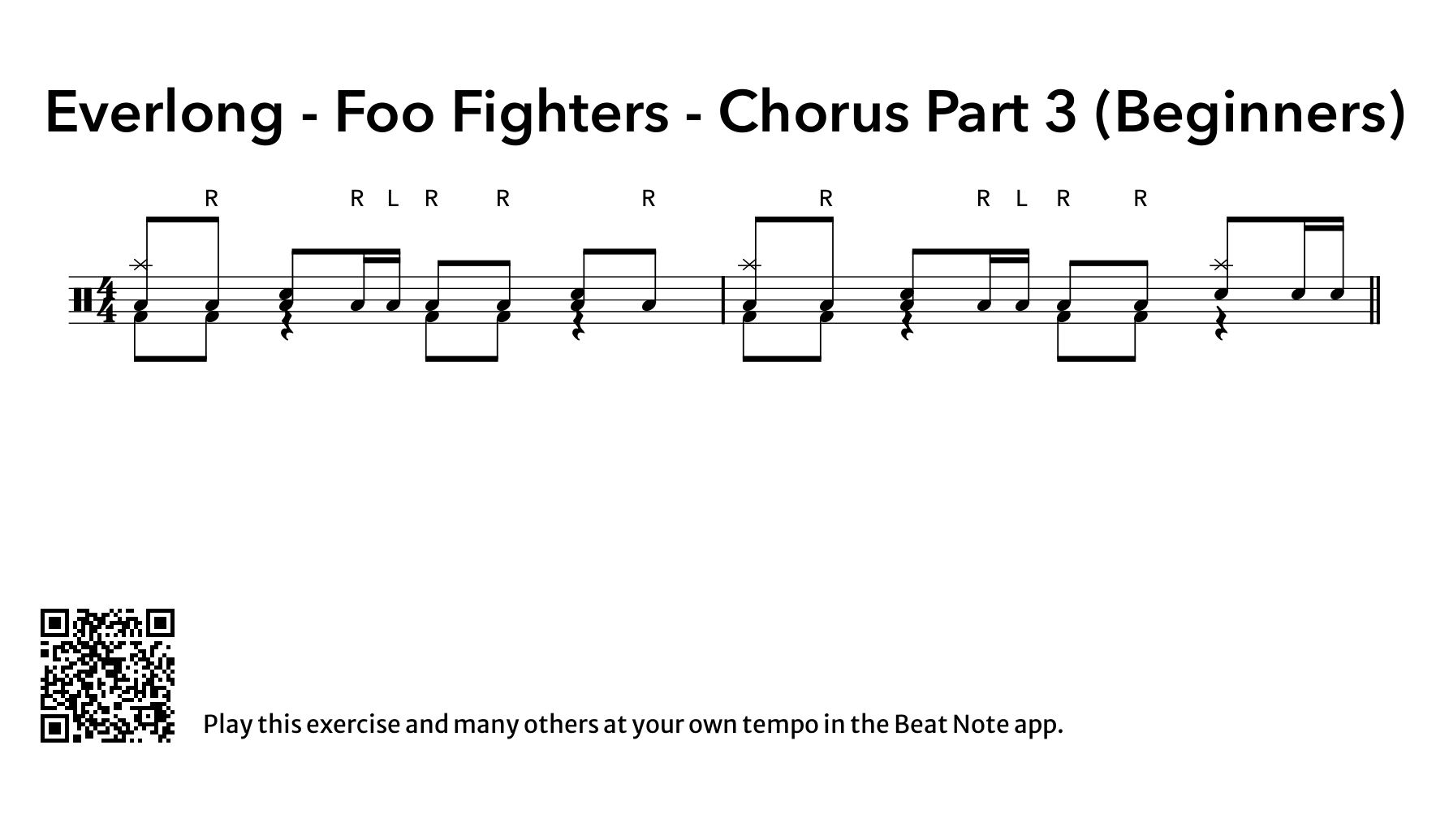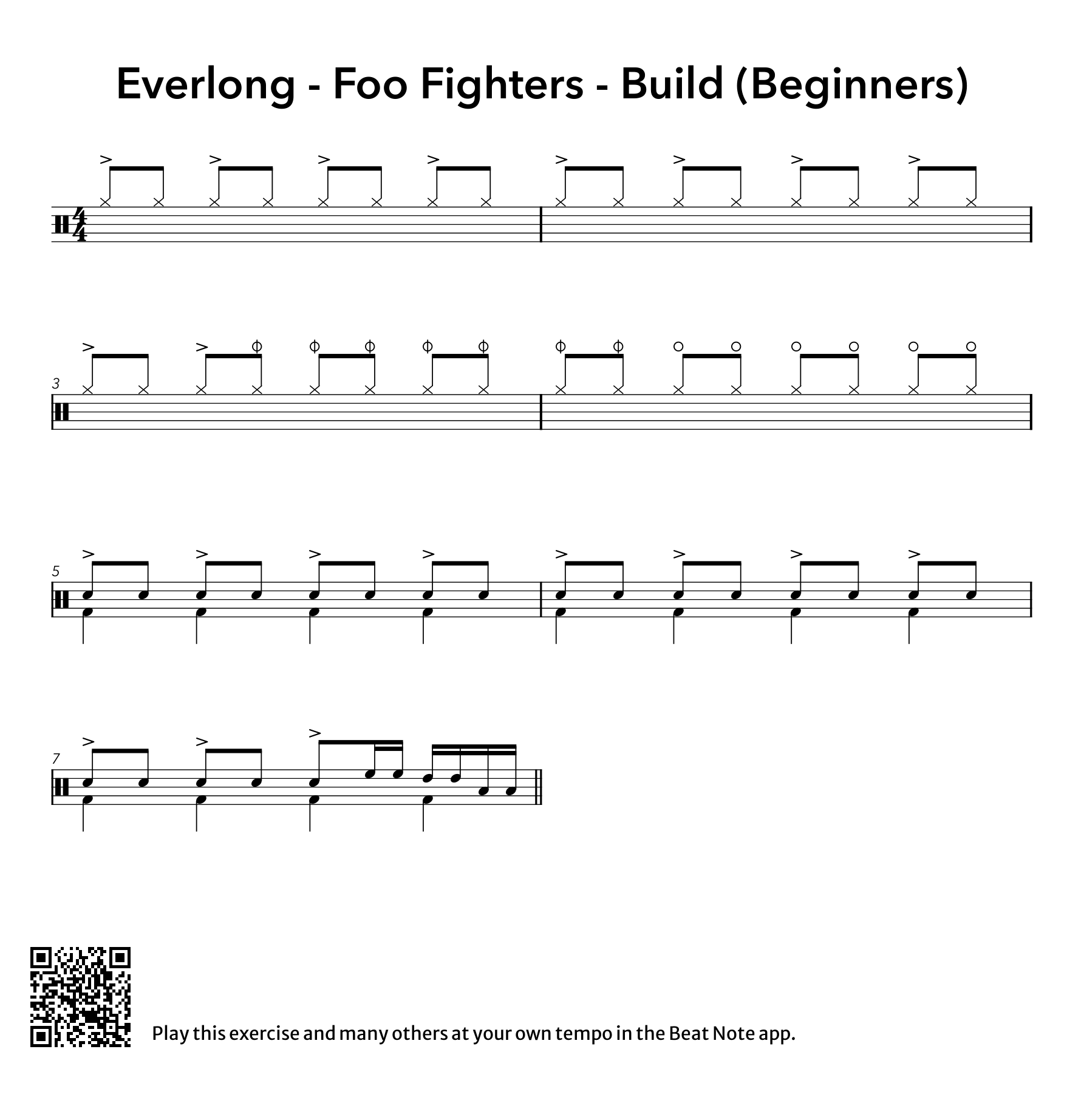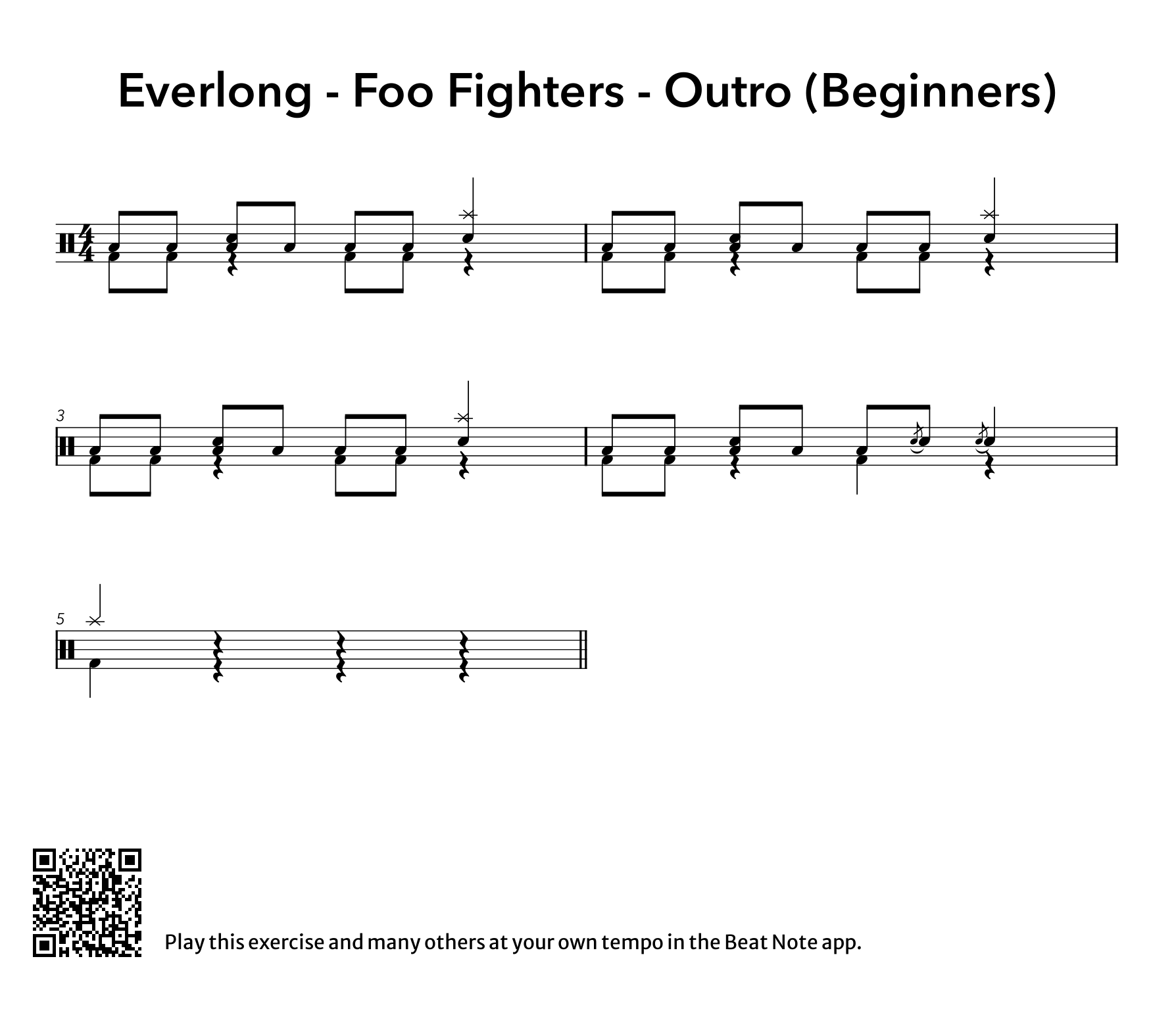Does this sound familiar? You’ve started playing the drums, got comfortable with different songs, and one day you wake up and decide you’re ready to play “Everlong” by Foo Fighters. You follow tutorials online and probably experience something along these lines:

I get it, everyone wants to play “Everlong” by Foo Fighters. With Dave Grohl on drums for the original recording and Taylor Hawkins (RIP) keeping the beat live, this song is one of the most iconic drum tracks in rock history. But let’s be real – it’s hard, especially for beginners.
In This Article
Tempo (BPM)
Clocking in at 158 BPM with relentless 16th notes on the hi-hat and complex fills, it’s four minutes of high-intensity drumming that demands solid technique. Sounds daunting, right? Don’t worry; we’re here to simplify it.
Song Structure
Before we dive into the beats and fills, let’s take a look at the song structure. Dave Grohl wasn’t messing around when he wrote it back in 1997. Many rock songs follow a simple structure with intro, verse, bridge, and chorus, each 4, 8, or 12 bars long. Everlong, just for fun, has 8 different parts, and they’re multiples of 7 bars long. Mostly, that is.
When I start playing a new song, I try to get an understanding of the song structure. I often notate songs with colors, and when I play it, I find myself thinking of the “red” part or the “blue” part.
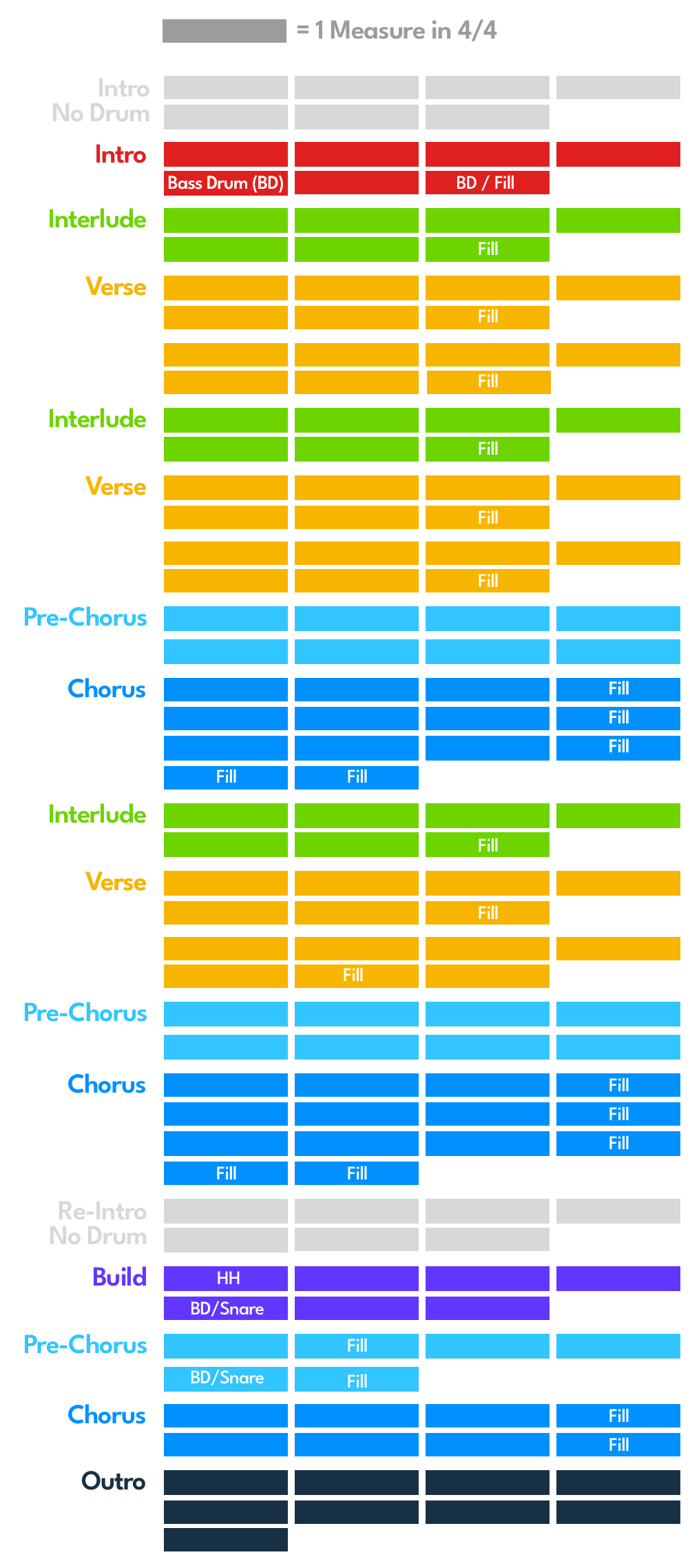
With this colored song structure as a guide, let’s tackle the individual parts, but simplified so even beginners can play them.
▬ Intro
The intro is fairly straightforward. For the first 7 measures, you can kick back and enjoy the guitar intro. Then it’s straight 16th notes on the hi-hat with notes 2 and 4 accented. But at 158 BPM, let’s leave 16th notes to more seasoned drummers.
Everlong - Intro Beat
For this beginners’ version, we just play straight eighth notes. It’s slowed down a bit to 130 BPM in this recording.
Open Everlong - Intro Beat in Drum Notation by Beat Note to change the tempo
Now that we have the basic beat, the intro requires a simple bass drum on 2 and 4 and ends with a simple fill with 16th notes on the snare.
Everlong - Full Intro (Beginners)
Add a bass drum on 2 and 4 starting from the 5th measure. This is at the real tempo of 158 BPM.
Open Everlong - Full Intro (Beginners) in Drum Notation by Beat Note to change the tempo
▬ Interlude
Now on to the instrumental interlude. Dave’s guitar riff needs a bit more oomph, so unfortunately we need to turn up the difficulty as well. But not by much!
Everlong - Instrumental Interlude (Beginners)
Continue with eighth notes on the hi-hats, a straight snare backbeat on 2 and 4, and add the bass drum patterns shown above. If this is too fast, just skip the and-of-3 and play straight quarter notes on the bass drum.
Open Everlong - Instrumental Interlude (Beginners) in Drum Notation by Beat Note to change the tempo
▬ Verse
Finally, Dave’s “Hello” comes in for the verse. Same pattern, hi-hat and snare remain the same, and the bass drum gets a bit more power.
Everlong - Verse Beat (Beginners)
Still eighth notes on the hi-hats, a straight snare backbeat on 2 and 4. The tricky part for the bass drum is the and of 4 in the first measure and the and of 1 in the second measure.
Open Everlong - Verse Beat (Beginners) in Drum Notation by Beat Note to change the tempo
Let’s look at the whole verse, all 14 measures of it!
Everlong - Verse 1 (Beginners)
The beat goes on for 14 measures with measures 7 and 14 varying slightly on the bass drum and with a simple 16th-note fill on the snare
Open Everlong - Verse 1 (Beginners) in Drum Notation by Beat Note to change the tempo
You’re still with me? Great. Let’s tackle that beast of a pre-chorus and chorus!
▬ Pre-Chorus
The Pre-Chorus is fairly straightforward when you break it down, save for some odd pauses. For this beginners’ version, we will just ignore these and play the same groove fast.
Everlong - Prechorus (Beginners)
This sounds pretty fast at 158 BPM. Play 3 bars consistently, crash along with the snare and bass drum separately, then follows a fast fill with 16th notes on snare and toms with the crash played along with the bass drum.
Open Everlong - Prechorus (Beginners) in Drum Notation by Beat Note to change the tempo
This was too fast? I thought so! Let’s focus on the individual parts. You can inch your way towards the 158 BPM when you practice them separately. Also, because the beats don’t fit into one measure in 4/4, I find it helpful to write it in 3/4 time. When you look at it that way, you just repeat this shortened measure 4 times. That’s it!
Everlong - Prechorus Part 1 (Beginners)
We play this at 120 BPM, looping it 4 times.
Open Everlong - Prechorus Part 1 (Beginners) in Drum Notation by Beat Note to change the tempo
For the second part of the pre-chorus and the fill, we’re cheating again, splitting it into two 3/4 and one 2/4 measure, just so we can read it better.
Everlong - Prechorus Part 2 (Beginners)
We play this at 120 BPM. If the toms in the fill are too hard, just play everything on the snare.
Open Everlong - Prechorus Part 2 (Beginners) in Drum Notation by Beat Note to change the tempo
The pre-chorus ends with alternating snare/hi-hat (half open) and bass drum 8th notes and a snare/tom fill at the end.
Everlong - Prechorus Part 3 (Beginners)
Play this again at 120 bpm.
Open Everlong - Prechorus Part 3 (Beginners) in Drum Notation by Beat Note to change the tempo
▬ Chorus
You made it this far, so let’s tackle the chorus. It’s a high-energy part again, with almost all 8ths on the hi-hats. There are 3 similar parts of 4 measures, which include a fill, plus 2 measures on the floor toms at the end.
Everlong - Chorus (Beginners)
The whole chorus, as written by Dave, at 158 BPM.
Open Everlong - Chorus (Beginners) in Drum Notation by Beat Note to change the tempo
Same as before, let’s break it down part by part.
Everlong - Chorus Part 1 (Beginners)
This starts with a single bass drum note followed by eighth notes on the crash starting on 2 with a bass drum/snare combination.
Open Everlong - Chorus Part 1 (Beginners) in Drum Notation by Beat Note to change the tempo
On to the fill, we’ll do the original version first, and then a simplified version:
Everlong - Chorus Part 2 (Beginners)
The bass drum plays straight eighth notes. It’s helpful to count here: 1-e-and-2 - and-a-3-e-and-a-4-e-and.
Open Everlong - Chorus Part 2 (Beginners) in Drum Notation by Beat Note to change the tempo
As promised, here’s a (slightly) simpler version:
Everlong - Chorus Part 2 (Simplified)
We play everything on the snare, no toms this time. Also, no weird pauses on the snare, but this will still be one of the more challenging parts.
Open Everlong - Chorus Part 2 (Simplified) in Drum Notation by Beat Note to change the tempo
And the chorus ends with a beat on the floor tom:
Everlong - Chorus Part 3 (Beginners)
We play an eighth-note beat on the floor tom and (optionally) add another 16th note on the floor toms (on the a-of-2).
Open Everlong - Chorus Part 3 (Beginners) in Drum Notation by Beat Note to change the tempo
That’s it for the chorus. It’s certainly the most challenging part of the song. After the chorus, we have another interlude and verse, then pre-chorus and chorus again, and then you can rest for another 7 measures.
▬ Build
The build is fairly straightforward again. The original sports 16th notes on the hi-hat and snare.
Everlong - Build (Beginners)
We simplify it to straight eighth notes with 16th notes just on the fill at the very end. Add a bass drum on quarter notes along with the snare.
Open Everlong - Build (Beginners) in Drum Notation by Beat Note to change the tempo
Then it’s another pre-chorus and chorus, and we finish the song with the outro:
▬ Outro
Everlong - Outro (Beginners)
Open Everlong - Outro (Beginners) in Drum Notation by Beat Note to change the tempo
You did it! At this point, assuming you followed each of the steps that simplified the song structure, beats, and fills, you’re feeling motivated and confident you can conquer the song. Remember, practice one part at a time, start with a low tempo and work your way up to 158 BPM. Or stop at 130 BPM. No one said you have to play it at Grohl’s or Hawkins’s insane tempo. If something is too hard, simplify even further, leave out beats or even whole parts. The key to playing songs is not to play note for note what’s in the sheet music but rather to understand the structure and feel, and even more importantly, to feel good playing it.
In that spirit, happy drumming!
